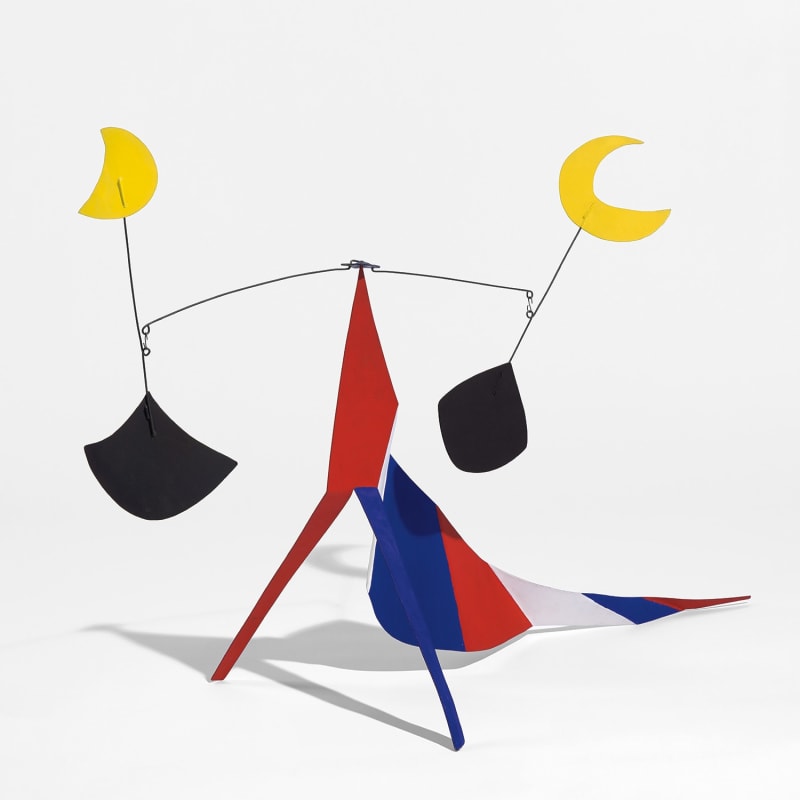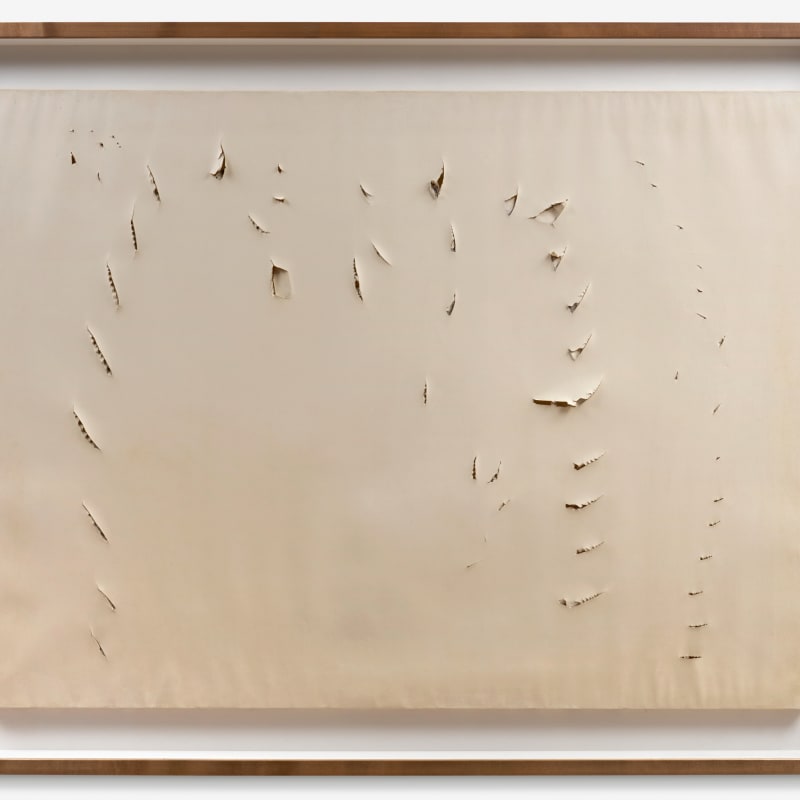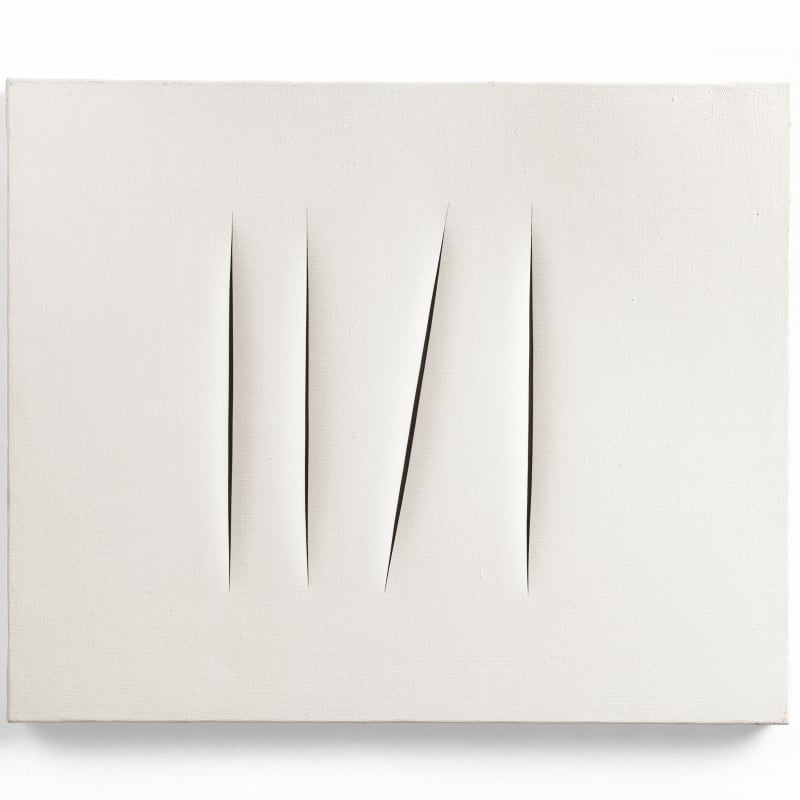
Preview days: 28-30 October 2020
Dimension of Space explores the legacy of two major artists, transatlantic contemporaries and visionaries who developed a radical approach to making art, stretching traditional notions of painting, space, motion and representation to their physical and conceptual limits. We explore the ground-breaking practices of Alexander Calder and Lucio Fontana and trace the development of Modernism, and the ways in which these pioneering artists worked across a wide range of media, exploring ideas of light, space, movement, structure, technology, abstraction, colour and art’s experiential possibilities.
Calder’s fascination with kinetics spurred him to blur the boundaries of mechanics and art. Two Moons (1969) exemplifies Calder’s chromatic and structural mastery, a work that bestrides a ‘mobile’ and ‘stabile’, the ingenious sculptural bodies of work for which he is most celebrated.
Like his American contemporary, Italian master Lucio Fontana was a pioneer in the pursuit of conceptual limits. Fontana founded Spazialismo in 1947, calling for art to embrace science and technology, was a pioneer of installation art, and began piercing canvases in 1949 and slashing canvases in 1958, to create an actual ‘dimension of space’, repudiating the history of traditional two-dimensional painting. Concetto Spaziale (1958) anticipates Fontana’s true Tagli (cut) paintings. These first tentative incisions in paper canvas are rough and energetic and evolve over the course of his career into the definitive, single cuts of Concetto Spaziale, Attese, (1967), a sublime and timeless example of this practice.
Throughout his career, Fontana revisited the Spatialist ideas and Concetto Spaziale (1964-66) sees Fontana revisiting the Spatalist ideas from his ‘Nature’ series of 1959, in which the artist molded terracotta into solid meteorites which he then cut, gouged, or punctured to explore the space beyond. Produced during an epoch defined by the so-called 'Space Race' which saw the first manned spaceflight in 1961, Concetto Spaziale (1964-66) marks a further development of Fontana's Spatialist investigations. A reference to moons, asteroids, and planetary forms, the highly glazed coloured orb is opened into the fourth dimension with a constellation of buchi (holes), evoking an infinite cosmos.
Pairing the radically innovative, sublimely modern, and inimitably timeless work of these post-war artists side by side highlights the contributions they made to modern and contemporary art, particularly in their explorations of space, structure and abstraction.


![Lucio Fontana, Concetto Spaziale, [Attesa], 1967](https://artlogic-res.cloudinary.com/w_800,h_800,c_fill,f_auto,fl_lossy,q_auto/artlogicstorage/benbrown/images/view/f8fd64b1c12fd9c9236038f13d811f98p/benbrown-lucio-fontana-concetto-spaziale-attesa-1967.png)


